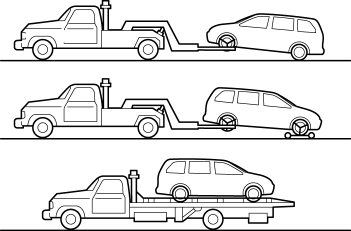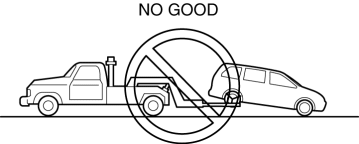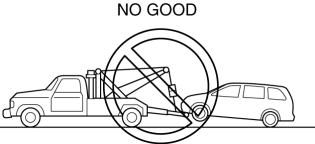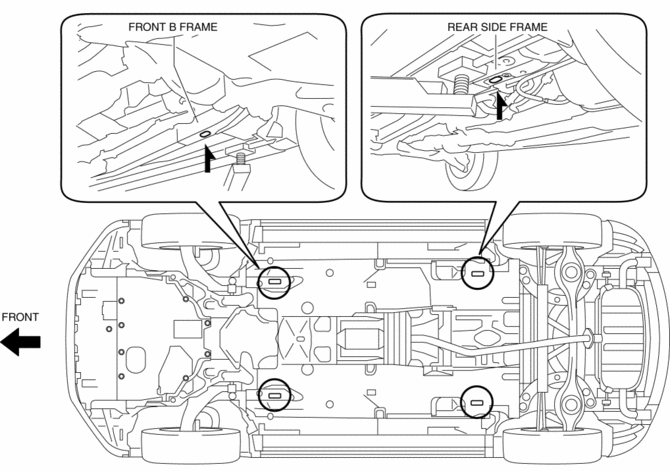Mazda CX-5 Service & Repair Manual: Towing
Towing Description
-
Proper lifting and towing are necessary to prevent damage to the vehicle. Government and local laws must be followed.
-
A towed vehicle usually should have its drive wheels (front wheels) off the ground. If excessive damage or other conditions prevent this, use wheel dollies.
-
When towing with the rear wheels on the ground, release the parking brake.

CAUTION:
-
Do not tow the vehicle pointed backward with driving wheels on the ground. This may cause internal damage to the transaxle.

CAUTION:
-
Do not tow with sling?type equipment. This could damage vehicle. Use wheel?lift or flatbed equipment.

Vehicle Securing Position
-
When transporting the vehicle by flat bed tow truck or trailer, secure the vehicle to the trailer using the holes and left tiedown loop shown in the figure.

CAUTION:
-
Do not use the tie down hook on the end of the rear bumper for towing or transporting the vehicle. The tie down hook is used only for transporting the vehicle by ship. Using the tie down hook could cause damage to the bumper and the vehicle body.
-
 Trailer
Trailer
...
 Body
Body
...
Other materials:
One Way Clutch [Fw6 A EL, Fw6 Ax EL]
Purpose/Function
The one-way clutch operates in 1GR and suppresses the counterclockwise rotation
of the front internal gear (as viewed from torque converter side).
Construction
The one-way clutch consists of a mechanical diode-type one-way clutch, inner
plate, and outer pla ...
Crankshaft, Main Bearing
Purpose, Function
The crankshaft converts the reciprocating movement of the piston to a rotational
movement via the connecting rod.
The main bearing forms an oil film on the outer surface of the crankshaft
journal to prevent wear due to sliding.
Construction
Crankshaft
...
Jacking Positions, Vehicle Lift (2 Supports) And Safety Stand (Rigid Rack) Positions
Jacking Positions
WARNING:
Improperly jacking a vehicle is dangerous. The vehicle can slip off the jack
and cause serious injury. Use only the correct front and rear jacking points
and block the wheels.
CAUTION:
Use safety stands to support the vehicle after it has been ...
